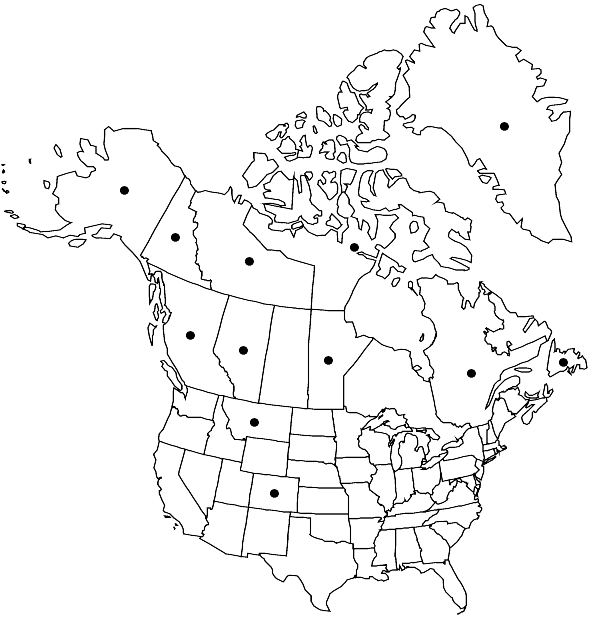Timmia norvegica var. norvegica
Plants robust. Leaves 3–8 (–12) mm, 0.8–1.1 mm wide at mid-limb; cells of mid-limb lamina (8–) 9–16 (–18) × (8–) 9–14 µm; costa ending below apex, papillose on abaxial surface of sheath and limb; base of costa dark and swollen, more strongly attached to stem than the lamina; with distal leaves often larger and deciduous, but never with loose clusters of linear leaves at stem tips.
Phenology: Sporophytes extremely rare.
Habitat: Wet calcareous sites such as seepage slopes, moist crevices or cliff ledges, snow patches, edges of small creeks and ponds in Arctic-montane areas, often intermixed with other mosses, including Timmia sibirica, T. norvegica var. excurrens, and T. austriaca
Elevation: low to high elevations (0-3600 m)
Distribution

Greenland, Alta., B.C., Man., Nfld. and Labr. (Nfld.), N.W.T., Nunavut, Que., Yukon, Alaska, Colo., Mont., Eurasia (Alps), Eurasia (Russia), Eurasia (Scandinavia), Eurasia (United Kingdom), Atlantic Islands (Iceland), Pacific Islands (New Zealand)
Discussion
Only three sporulating specimens of var. norvegica are known (one from Alaska). The deciduous leaves undoubtedly act as vegetative propagules.
Selected References
None.
Lower Taxa
"broader" is not a number.